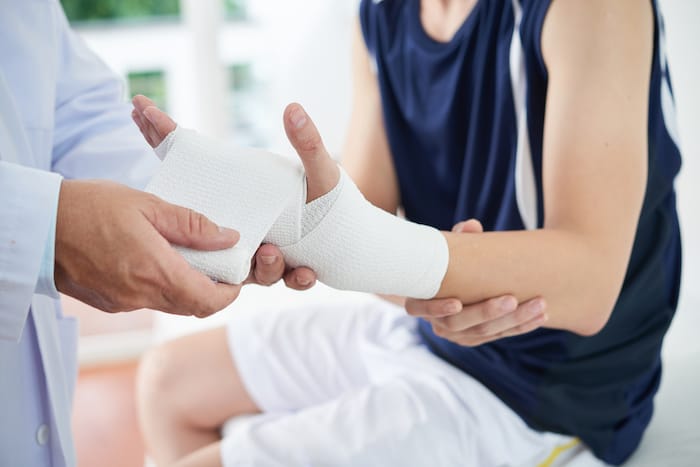Dealing with a physical injury is never easy. Whether you got that injury from sports, a work site accident, or while doing chores, every injury comes with its unique pain and struggles. Some injuries may cause you not to walk for a few days, while some could even leave you bedridden for a week. Overall, injuries are something people always try to avoid at all costs.
In the unfortunate case that you get injured, naturally you’ll want to recover and regain your strength as soon as possible to get back to your usual routine. However, attempting to work through the pain will only slow down your body’s healing process. Thus, giving your body and muscles enough time to heal and rest is crucial in proper recovery.
Here are six post-care injury tips that can help you regain your strength quickly and get back in good shape again.
Rest Effectively
First and foremost, allow your body to get complete rest for a few days, especially if your injury is quite severe. Doctors would often recommend you a specific timeline for rest and sleep, depending on the injury’s severity. If it’s a mild injury, a full day of rest might be enough before you can start moving around again.
Furthermore, when you rest, make sure you position your body in the most comfortable way to prevent further strain on your injury. For example, if the injury is located on your foot, use a brace or splint and place it on the injured area to keep it immobilized and completely at rest, and wait for the doctor’s further instructions.
Do Light Stretches
Once the early inflammation has been reduced, your doctor may recommend you to start doing light stretches and slow movements to promote blood circulation, especially in the injured area. But since strenuous workouts are still prohibited, it’s best to seek help and supervision from a professional physiotherapist in White Pine Health & Wellness Center or other health and wellness clinics within your area. The physiotherapists will conduct a proper diagnosis of your injury and analyze which treatment options are best for you.
With your doctor’s approval and the physiotherapist’s assistance, you can start doing some light exercises, stretches, and other slow movements that will improve the condition of your muscles and promote better motion and flexibility.

Apply Cold Therapy
For mild and moderate injuries, your doctor may advise you to perform cold therapy on your injury to promote early healing. Generally, after you get injured, the affected area will show redness and swelling due to the impact of the incident. When this happens, you’ll need to do cold therapy immediately, also known as RICE. RICE is an acronym for the step-by-step procedure of cold therapy: rest, ice, compress, and elevate.
- Rest: Avoid doing any activity that may worsen the injury. Let the inflamed area completely rest for the next one to two days.
- Ice: Put an ice pack on the harmed area to minimize pain, redness, and swelling.
- Compress: If you’re able, you can wrap and compress a bandage on the injured area by yourself. Otherwise, ask a nurse to do it for you, especially if the injured area is unreachable.
- Elevate: Keep the injury elevated to reduce swelling and pain. You can use a pillow or other soft object to achieve elevation.
Continue doing these steps for a few days, together with the other tips mentioned in this article, until the pain, redness, and swelling have dissipated.
- Drink Lots Of Water
Proper body hydration is vital in promoting faster healing and recovery of your injury. With more water in your bloodstream, it’ll help bring in more oxygen and nutrients in your body, especially to the inflamed area.
Moreover, make sure to minimize or temporarily avoid consuming caffeinated drinks and alcoholic beverages, as these would only slow down your recovery process.
- Nourish Yourself With Foods That Promote Healing
The food you eat can significantly impact the recovery of your injury. Besides eating a healthy diet, make sure you focus on eating foods that promote healing and quicker strength recovery. Here are the nutrients your body needs for recovery.
- Protein
Protein helps promote muscle development, especially if the injury has severely damaged your muscle tissues. Some protein-filled foods to consume during your recovery may include fish and meat.
- Omega-3 fatty acids
Foods filled with omega-3 fatty acids, like walnuts, soybeans, salmon, and sardines, can help boost your recovery process, as they’re rich in anti-inflammatory properties.
- Vitamin C
Like omega-3, vitamin C-rich foods also help reduce injury inflammation and rebuild muscle tissues. You can get more Vitamin C from leafy green veggies and citrus fruits.
- Calcium
If your injury includes a fracture or broken bone, you’ll need to include calcium-rich foods in your diet to strengthen your muscles and bones during recovery. These foods are cheese, milk, almonds, leafy greens, and more.
- Prioritize Mental Health Recovery Too
Besides being physically injured, your mental health may be adversely affected as well. This is true especially if the incident and the resulting injury have made you feel frustrated, guilty, and angry for letting it happen. Some people might even experience stress and anxiety following the injury, such as athletes with sports injuries who need to stop playing temporarily.
Thus, apart from doing the steps above, make sure to also prioritize your mental health recovery. You can seek professional support from therapists or engage in new hobbies to take your thoughts away from the injury. A positive mind and attitude will help boost your recovery process.
Takeaway
Overall, injuries can happen anytime and anywhere. Thus, prevention and practicing safety habits are crucial in every activity you do. In the event that you do get injured, keep track of the above tips to help you regain your old strength and achieve a full recovery in no time.
Throughout the year, our writers feature fresh, in-depth, and relevant information for our audience of 40,000+ healthcare leaders and professionals. As a healthcare business publication, we cover and cherish our relationship with the entire health care industry including administrators, nurses, physicians, physical therapists, pharmacists, and more. We cover a broad spectrum from hospitals to medical offices to outpatient services to eye surgery centers to university settings. We focus on rehabilitation, nursing homes, home care, hospice as well as men’s health, women’s heath, and pediatrics.








